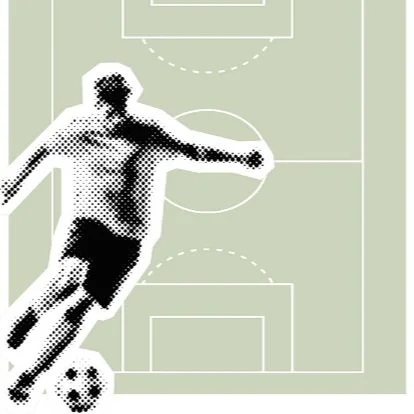Changing the Game: The Transformative Role of Technology in Soccer
*Article from Lexington Line Spring/Summer 2024 Issue, pages 36-38
Check out the full issue here
The Premier League in England is the most-watched sports league on earth, and slowly but surely, Americans seem to be getting on board. Soccer is a fast-growing sport in the United States, with its popularity increasing even more after the Women’s World Cup in Australia and New Zealand last year. The announcement that the 2026 Men’s World Cup will be held in North America has further boosted the sport’s appeal.
New to the party? It’s worth being up to date on the ways modern technology has emerged as a driving force behind the transformation of soccer as we know it. Two developments in particular you want to know about are Video Assisted Referee (VAR) and wearable technology.
Video Assistant Referee (VAR)
One of the most significant advancements in recent soccer history has been the implementation of Video Assistant Referee (VAR) technology.
According to the International Football Association Board, the Video Assistant Referee is a match official with independent access to match footage who may assist the referee in the event of a “clear and obvious error” or “serious missed incident.”
VAR has both supporters and detractors among fans, players, and managers.
Ange Postecoglo, the manager of Tottenham Hotspur in the Premier League, thinks the new process causes too many delays and interrupts the rhythm of the game.
“I don’t like the standing around,” Postecoglo said last year, according to Sky Sports. “In my 26 years, I was always prepared to accept the referee’s decision, good, bad, or otherwise, and I’ve had some shockers in my way as well, but I’d cop that because I just wanted the game to be played.”
Unai Emery, Aston Villa’s Manager, thinks otherwise.
“For me, it’s very clear. It’s VAR—it says if something is good or not good and that action is clear,” Emery told beIn Sports in 2019.
According to FIFA, in the 2018 Men’s World Cup, refereeing decisions were 95.6% accurate when VAR was not used and 99.35% accurate when it was.
Another study of 13 men’s national leagues revealed that referee decision accuracy went from 92.1% to 98.3% when VAR was used.
However, the system is not flawless.
According to Sky Sports, there were 20 VAR errors during the 2023/24 season as of February 8th. The Premier League says 17 of those were a failure of VAR to intervene when the panel felt it should have.
“Significant human error” led to a factual mistake during a match between Liverpool and Tottenham last fall: Luis Diaz’s goal for Liverpool was disallowed when on-field officials flagged him offside. Video evidence showed that he was not offside, but the VAR failed to intervene, and Liverpool wound us losing 2-1.
“It’s worth reminding ourselves that, though the VAR can feel overbearing and disruptive to the general flow of the game,” The Athletic wrote at a time, “and that there are plenty of us who remember what it was like when referees just got things wrong and we all had to be adults and deal with it, the scope of the official is pretty limited.”
However, fewer mistakes have occurred this Premier League season (2023/24) compared to last season (2022/23). Some teams seem to benefit more than others, which can be frustrating for fans, but the system appears to be improving and is likely here to stay.
Wearable Performance Tracking Systems
Wearable devices come equipped with sensors and tracking capabilities that provide coaches and players with valuable data on players’ physical metrics, such as heart rate, distance covered, and acceleration.
This data helps coaches tailor training regimens to individual players’ needs and minimize the risk of injuries, ultimately improving player performance and enhancing the overall quality of the game. Playmaker, STATSports Apex GPS Tracker, and Catapult PLAYR GPS Tracker are some of the main devices that athletes use.
“The Playmaker helped me a lot due to my career as a soccer player,” says Clarissa Reyes, who has played soccer for 15 years. Reyes, “When I’d play without the device, I wouldn’t be sure how bad of a player I was that day.”
Reyes says the device tracked her movement, recording how many times she’d touch the ball and make plays.
“This device helped me improve in areas that I wasn’t aware that I needed improvement in,” she says.
According to The Athletic, modern professional soccer, “is worlds apart from the amateur game, most notably due to the detail with which players’ performance is objectively monitored- from the volume of passes made to the blades of grass covered.”
These devices aren’t just useful for long-term player development either.
“It is one thing having a wealth of data logged for each player, but the real benefit of the technology is its ability to generate instant, actionable insight to the mobile devices.”
It’s an exciting time to be a soccer fan, so if you’re even a little curious, give it a shot—and keep with how the game keeps evolving.





